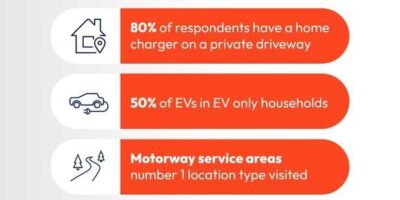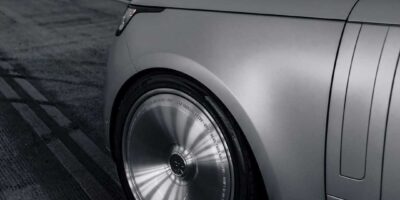Now, more than ever, Britain is a nation of internet shoppers. Even before the pandemic struck, the percentage of retail sales that originated online was on an inexorable upward trajectory, but as the first national lockdown took hold, internet sales jumped[i] from 19.1% to 32.8%, peaking last January at 37.7% with the third lockdown.
But as we camped in our living rooms, alt-tabbing back to Amazon after each Teams call to pluck a juicy Lightning Deal from the ever-ripening homepage, someone had to brave the outside world to deliver it all. And that fell to the humble van driver.
As a result, van fleets are more important to our economy than ever before and, as befits their status as a mobile workplace, manufacturers have responded by making them more comfortable – car-like, even. Now, all but the most utilitarian Ford Transit rolls off the line replete with a centrally-mounted touchscreen, and that creates an opportunity to streamline drivers’ workflows that so far has remained untapped.
VNC Automotive’s Cobalt Cube® enables the secure integration of multiple devices with a vehicle’s existing displays and controls, removing the need for bulky aftermarket hardware and screens. That means third-party systems – common throughout the logistics industry – can now be accessed through the vehicle’s built-in display, significantly lowering the installation overhead, making them more intuitive to operate and safer in the event of an accident. Furthermore, with no unsightly holes in the dashboard, the vehicle retains a higher residual value when it comes to the end of its fleet life.
iOS and Android smartphone-based apps can be integrated, too, making it easier to access information such as consignment notes or next drop location, all with the minimum of distraction for the driver.
“Many fleets have developed smartphone apps to act as the main point of interaction for their drivers,” said Peter Galek, Product Engineering Director, VNC Automotive. “That isn’t necessarily the best device for many day-to-day functions; the small screen creates limitations, and they’re often dropped, damaged or lost. Using Cobalt Cube, however, makes it possible to capitalise on the ergonomically-optimised display that’s already fitted to the vehicle.”
The system is well-proven, having been integrated into police force and first responder vehicles around the globe, while the company’s connectivity technology can be found in more than 35 million vehicles worldwide. By embedding Cobalt Cube, vehicle manufacturers can embrace the boom in touchscreens in LCVs and add significant value for their fleet customers.
Imagine being able to deliver a 15% improvement in fuel economy, a 40% reduction in accidents, and 45% less downtime across an entire fleet. One platform promising such transformative results is Lightfoot, a telematics provider that describes their approach as empowering drivers to manage themselves by incentivising good driving. Having gamified the experience through an app, careful and efficient drivers are rewarded with the chance to win prizes while those who are yet to reach the same standard are coached in real time.
With Cobalt Cube, the groundwork has been laid for integrating systems such as this with the vehicle’s built-in display where it could also join the company’s logistics application, potentially eliminating the need for the driver to use a smartphone at all.
By working with VNC Automotive, Cobalt Cube’s software configuration can be customised to suit almost any requirement, but this flexibility also simplifies the integration for the manufacturer. Each vehicle can be assembled to the same standardised specification, leaving the customer or their service integrator to upload the software required for that particular unit’s role, whether that’s a last-mile courier, utility engineer, or chilled supermarket delivery.
“We’ve worked with OEMs, fleets and integrators around the world for many years, so we already have the expertise and experience required to link these systems together to ensure they perform seamlessly and flawlessly,” continued Galek.
“Now that LCVs’ connectivity has caught up with passenger cars, there’s an opportunity to take it to the next level and use that technology to make our hard-working van drivers’ lives easier and safer. After the support they’ve shown us, they certainly deserve it.”
*Article Source https://www.vncautomotive.com/








